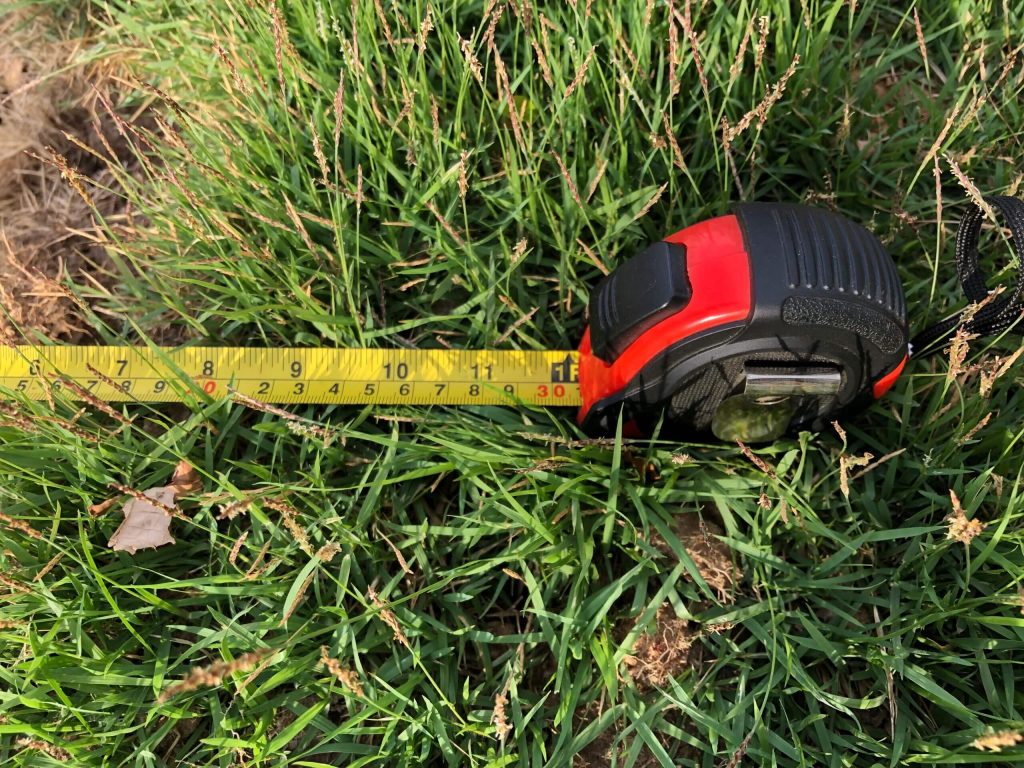When looking to lay a new lawn, it can be difficult to figure out exactly how much turf you’re going to need for your place, and stressful too. Ordering too much brings about needless cost. Ordering too little means having to order again.
But not to worry, measuring your lawn becomes a simple process with the right formulas and equipment.
MANUALLY MEASURING YOUR LAWN
Oftentimes, the area of a lawn can be calculated manually using some simple geometry rules. To do this, a helpful first step is to make a rough sketch of your new lawn. This way you have a clear idea of the shape of the space and the measurements you will need to take to calculate the area.
For small spaces, using a tape measure along the outsides of your lawn may be sufficient for getting measurements. However, if you have a large area to cover, getting the job done with a tape measure may be a little ambitious. In this case, other equipment like a trundle wheel or laser measure may be the way to go.
Rectangular Lawns
A rectangular or square lawn is very common and luckily, also very easy to measure. To find the area of your rectangular lawn, simply multiply the length by the width.
Area=Length×Width

Area = 6m x 3m
= 18m2
Triangular Lawns
The area of a triangular lawn is calculated by multiplying the base by the height and dividing by 2.
Area = Base × Height/2

Area = 6m x 3m/2
= 9m2
There are different types of triangles, so take care to choose the correct measurement as your height.

Circular Lawns
To calculate the area of a circular lawn, you will need to measure out the radius. This is half of the width of a circle. The formula is given below. Here, the value Pi is approximately 3.14.
Area = Radius × Radius x Pi

Area = 2m x 2m x 3.14
= 12.56m2
Irregular Lawns
For an irregularly shaped lawn, first try splitting it up into separate shapes that are easier to work with, calculating the area of each and adding them together to find the total area.
If your irregular lawn has a more curved shape, you may have to do some estimating. A common method of estimating the area of an irregular lawn is the offset method. This method requires splitting the lawn with offset lines, calculating an average width of the lawn by averaging these offset lines and then multiplying by the length of the lawn.
Average width = Sum of widths of offset lines / Number of offset lines
Area = Average width × Length

Area = 4mx10m = 40m2
FOR THE MORE TECH-SAVVY
Manually measuring your lawn, particularly if it is an irregular shape or a large size, can be a difficult task. If you would prefer not to pull out your calculator, Google Earth or Google Maps may have a solution for you.
These applications can be used to calculate the area of a segment of land visible through satellite imaging.
Measuring using Google Earth
- Open Google Earth in your web browser and search for your property.
- Click the ruler icon on the left-hand side of the screen. Google Earth will then switch to a top-down view.
- Click around the border of your yard to add measurement points. To remove a measurement point, click the undo button.
- When you have finished placing measurement points, double click your last measurement point or click done.
- The perimeter and area will be automatically displayed on the right of the screen.
Measuring using Google Maps
- Open Google Maps in your web browser and search for your property.
- Right click on the point you would like to start from and select ‘Measure distance’ from the drop-down menu. A measurement point should appear on the screen.
- Click around the border of your yard to add more measurement points. The more points you add, the more accurate the measurement will be.
- When you have placed your final point, drag it on top of the initial point to create an enclosed shape and the area will appear at the bottom of the screen.
- You can drag and adjust measurement points afterwards if the shape is not exactly right.
Note that neither Google Earth nor Google Maps take into account elevation, so this method is more accurate for flat lawns.
AVOID UNDERESTIMATING
There is nothing worse than ordering a new lawn only to find that you don’t have enough turf and can’t finish the job.
No matter how you calculate the area of your lawn, we recommend adding an extra 5-10% to your final area to avoid having to place another order. This also accounts for turf cuttings to shape your lawn and fill in all of those small spaces.


